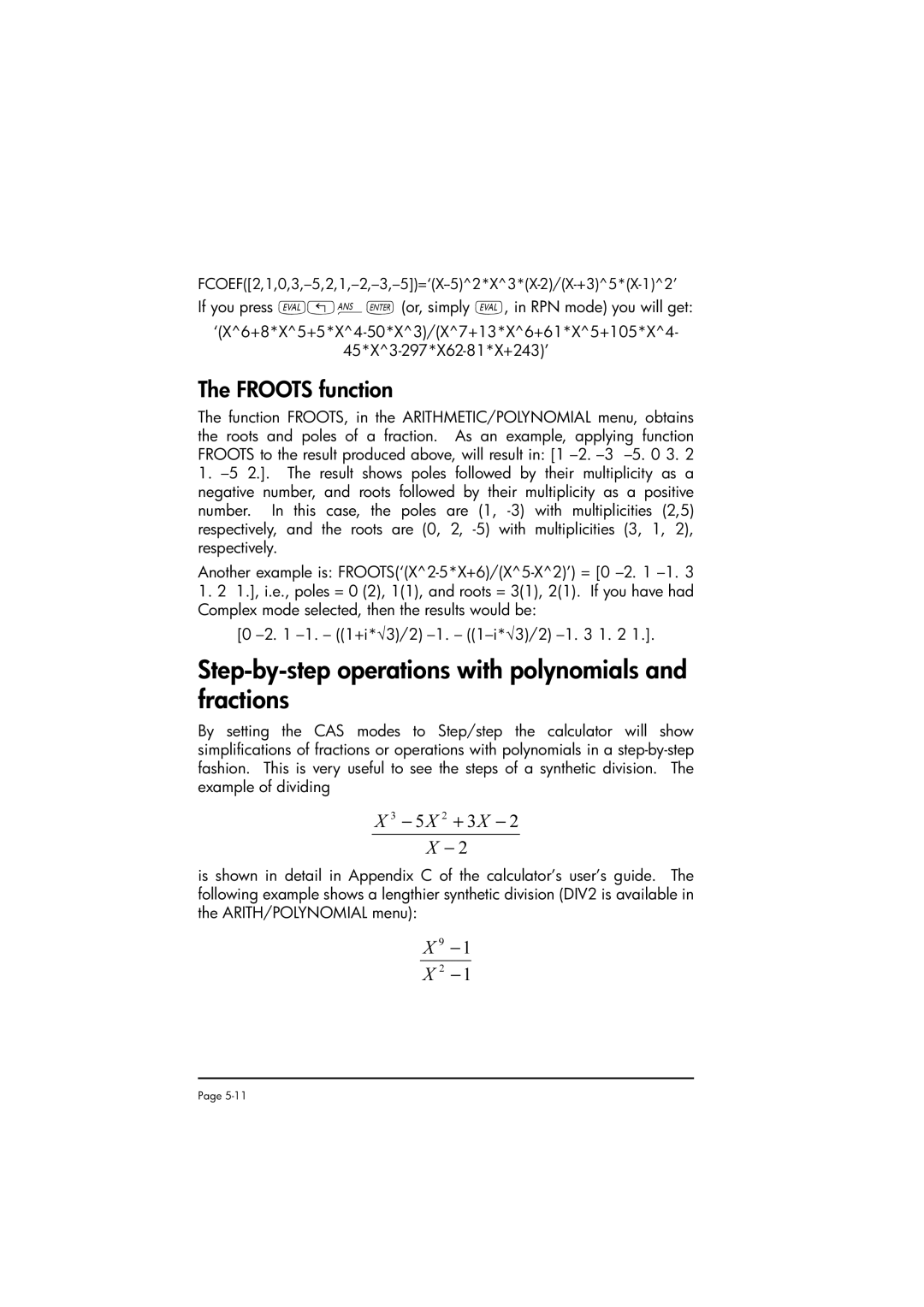
If you press µ„î`(or, simply µ, in RPN mode) you will get:
The FROOTS function
The function FROOTS, in the ARITHMETIC/POLYNOMIAL menu, obtains the roots and poles of a fraction. As an example, applying function FROOTS to the result produced above, will result in: [1
1.
Another example is:
1.2 1.], i.e., poles = 0 (2), 1(1), and roots = 3(1), 2(1). If you have had Complex mode selected, then the results would be:
[0
Step-by-step operations with polynomials and fractions
By setting the CAS modes to Step/step the calculator will show simplifications of fractions or operations with polynomials in a
X 3 − 5X 2 + 3X − 2
X− 2
is shown in detail in Appendix C of the calculator’s user’s guide. The following example shows a lengthier synthetic division (DIV2 is available in the ARITH/POLYNOMIAL menu):
X 9 − 1
X 2 − 1
Page
